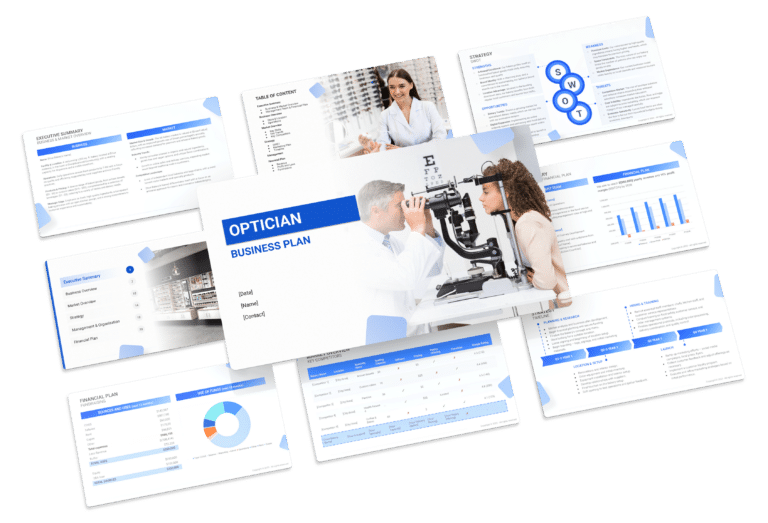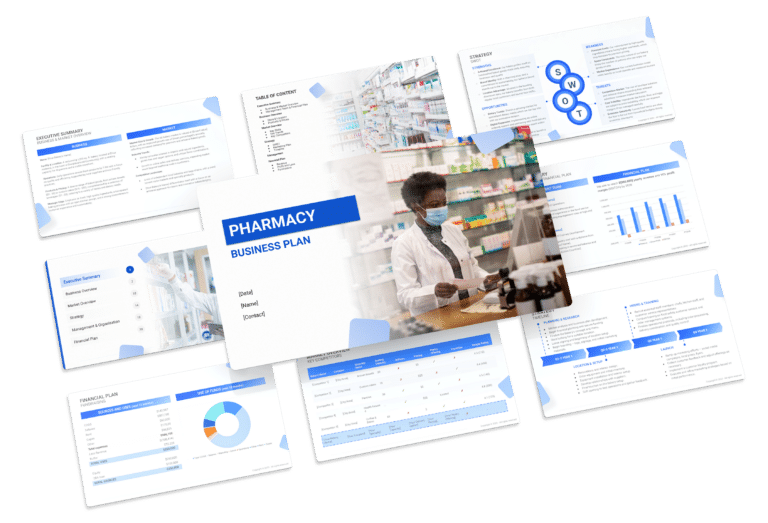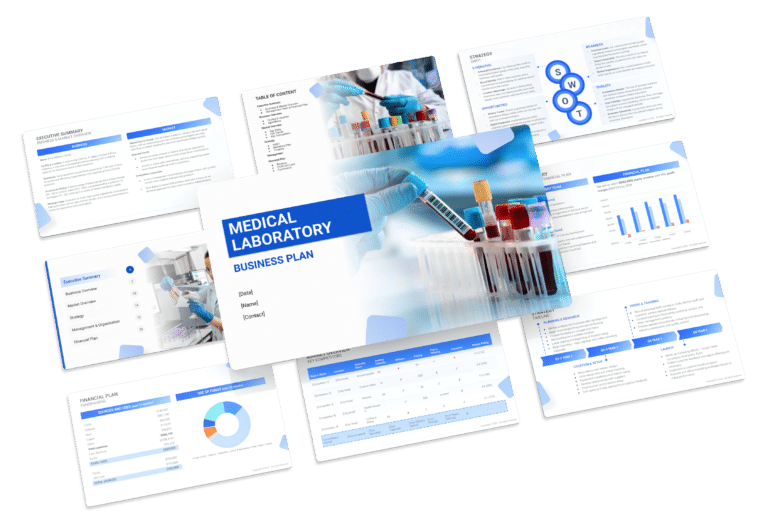How to Prepare a SWOT for a Medical Laboratory
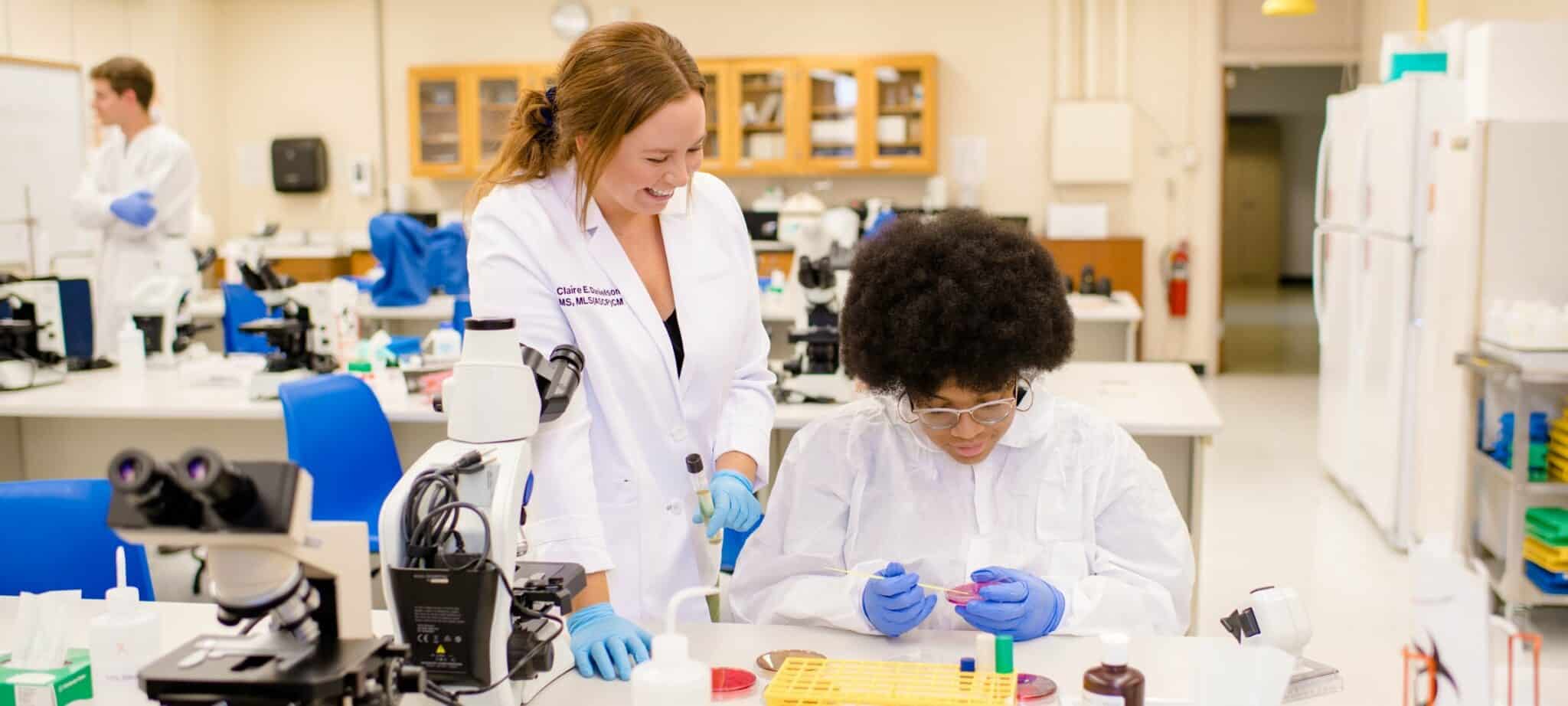
Conducting a SWOT analysis is essential for crafting a comprehensive business plan for a medical laboratory. SWOT (Strengths, Weaknesses, Opportunities, Threats) provides a strategic framework to assess internal capabilities and external influences.
While strengths and weaknesses pertain to internal factors controlled by the laboratory, opportunities and threats are external variables that can shape its trajectory. Incorporating a SWOT analysis into the business plan enables a medical laboratory to gauge its current standing, pinpoint areas for advancement, and recognize potential pitfalls.
For instance, strengths may encompass state-of-the-art equipment and highly skilled staff, while weaknesses might include outdated technology or insufficient marketing efforts. This article will explore various examples of strengths and weaknesses, equipping laboratory managers with valuable insights for enhancing their business plans.
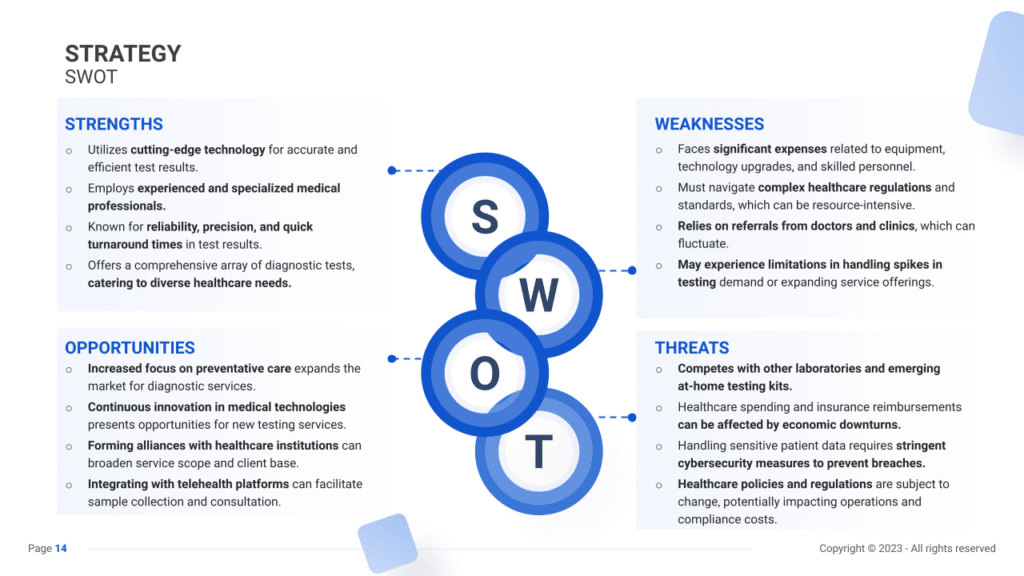
Strengths
Delve into the inherent strengths that position medical laboratories as vital pillars of healthcare and diagnostics.
- Advanced Diagnostic Technology and Equipment: Medical laboratories leverage cutting-edge diagnostic technology and equipment, ensuring accuracy and efficiency in test results.
- Example: Utilizing state-of-the-art mass spectrometry equipment enhances the laboratory’s capabilities for detailed and precise analysis.
- Highly Skilled and Specialized Staff: Laboratories boast highly skilled and specialized staff, including pathologists, medical technologists, and scientists, ensuring the highest standards of diagnostic expertise.
- Example: The presence of board-certified pathologists ensures accurate interpretation of complex test results, fostering trust among healthcare providers and patients.
- Broad Range of Test Offerings: Medical laboratories offer a broad range of diagnostic tests, catering to diverse medical specialties and providing comprehensive healthcare support.
- Example: Expanding test offerings to include emerging diagnostic panels, genetic testing, and specialized assays broadens the laboratory’s service portfolio.
- Accreditations and Quality Certifications: Laboratories often hold accreditations and quality certifications, signifying adherence to rigorous standards and instilling confidence in healthcare providers and patients.
- Example: Attaining accreditation from reputable organizations, such as the College of American Pathologists (CAP) or the Clinical Laboratory Improvement Amendments (CLIA), establishes the laboratory’s commitment to quality.
Weaknesses
Identify and address weaknesses to fortify your medical laboratory against potential challenges.
- Turnaround Time Challenges: Laboratories may face challenges in achieving optimal turnaround times for certain tests, impacting service efficiency.
- Example: Implementing streamlined processes, adopting automation, and optimizing workflow management reduce turnaround times for critical tests.
- Dependence on Specialized Personnel: A dependence on highly specialized personnel may pose a weakness, especially in cases of staff shortages or difficulties in recruitment.
- Example: Cross-training laboratory staff and implementing knowledge-sharing initiatives mitigate the impact of personnel dependencies.
- Costly Maintenance of Cutting-edge Equipment: The maintenance and operational costs associated with cutting-edge diagnostic equipment can strain financial resources.
- Example: Implementing a proactive equipment maintenance schedule and exploring cost-sharing models with healthcare partners optimize resource allocation.
- Data Security and Privacy Concerns: Laboratories face challenges in ensuring data security and privacy compliance, especially in an era of increasing cybersecurity threats.
- Example: Investing in robust cybersecurity measures, staff training, and regular audits ensures the confidentiality and integrity of patient data.
Opportunities
Explore avenues for growth and advancement by capitalizing on emerging opportunities in the evolving landscape of medical laboratory services.
- Expansion of Genetic Testing Services: The growing demand for genetic testing presents an opportunity for laboratories to expand their genetic diagnostic services.
- Example: Introducing comprehensive genetic testing panels for predisposition to diseases and personalized treatment plans aligns with the rising interest in precision medicine.
- Telepathology and Remote Diagnostic Services: Embracing telepathology and remote diagnostic services enables laboratories to extend their reach and collaborate with healthcare providers globally.
- Example: Offering telepathology consultations and remote diagnostic services for healthcare facilities in underserved areas enhances accessibility and collaboration.
- Partnerships with Research Institutions and Pharmaceutical Companies: Forming strategic partnerships with research institutions and pharmaceutical companies fosters collaboration in clinical trials and research initiatives.
- Example: Collaborating on research studies, biomarker discovery projects, and clinical trials creates additional revenue streams and enhances the laboratory’s research capabilities.
- Integration of Artificial Intelligence (AI) in Diagnostics: Harnessing the power of artificial intelligence in diagnostic processes enhances efficiency, accuracy, and the potential for early disease detection.
- Example: Integrating AI algorithms for image analysis in pathology or using machine learning for predictive analytics optimizes diagnostic capabilities.
Threats
Anticipate and mitigate potential threats to ensure the long-term sustainability and success of your medical laboratory.
- Regulatory Changes and Compliance Challenges: Changes in healthcare regulations and compliance challenges may impact laboratory operations and billing practices.
- Example: Regularly updating policies, staying informed about regulatory changes, and investing in compliance training for staff ensure ongoing adherence to regulations.
- Competition from Non-Traditional Diagnostic Providers: The emergence of non-traditional diagnostic providers, including direct-to-consumer testing companies, poses a threat to traditional laboratory services.
- Example: Emphasizing the laboratory’s commitment to accuracy, expertise, and comprehensive testing options differentiates it from non-traditional providers.
- Economic Downturn and Budget Constraints in Healthcare: Economic downturns and constraints on healthcare budgets can lead to reductions in testing volumes and reimbursement rates.
- Example: Diversifying revenue streams, such as offering specialized testing services for niche markets or establishing cost-effective testing packages, mitigates the impact of economic challenges.
- Global Health Crises and Pandemics: Global health crises, such as pandemics, may disrupt laboratory operations and necessitate rapid adaptation to changing testing demands.
- Example: Developing contingency plans, stockpiling essential supplies, and enhancing laboratory flexibility for rapid scale-up during crises ensure preparedness for unexpected challenges.


